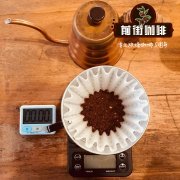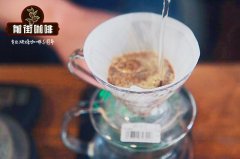Pawangba Malawi AA Organic Coffee Bean Taste Characteristics Description_Malawi Coffee Bean Processing Introduction

Professional coffee knowledge exchange more coffee bean information please follow the coffee workshop (Wechat official account cafe_style)
Malawi is located in a landlocked country of southeast Africa. It grows at 1300 mi mi 1500 m above sea level. Pawamba Malawi treats raw beans with traditional washing treatment and ferments them in a sink.
Baking degree: shallow and medium baking
Second selection of raw beans by hand
Flavor description: full-bodied, soft fruit sweet aftertaste lingering in the mouth for a long time.
Lake Malawi
Lake Malawi is a strange lake in the world today.
Lake Malawi was formed by the collapse of faults, formerly known as Lake Niassa. "Malawi" means flame in the local Nianga language. it originally refers to the golden sun shining on the lake, and the lake shines like a flame. Used as the name of the country and the lake, it means that there is a lake shining like a flame in the beautiful and rich land.
Lake Malawi covers an area of 30800 square kilometers, stretches 560km from north to south, stretches from east to west with an average water depth of 273m, with an average water depth of 273m. With an elevation of 472m above sea level, Lake Malawi is the third largest freshwater lake in Africa and the fourth deepest lake in the world. Around Lake Malawi, except in the south, there are many mountains on three sides and the scenery is beautiful. The lake is poured into 14 perennial rivers, of which the Ruhuhu River has the largest amount of water, and then flows south through the Shirai River to connect with the Zambezi River. Most of the waters of the Lake region are located in the Republic of Malawi, while only a small portion of the east and north belong to Tanzania and Mozambique.
Geographical features of Malawi
Almost the whole country of Malawi is high in the mountains, so there is a significant vertical difference in climate in most areas, which is the highland climate in the tropical dry and wet season. Generally speaking, the temperature in the alpine plain is very mild and stable, but the temperature in winter can be as low as 4 degrees Celsius. On the other hand, the temperature in the basin is muggy, which can reach 39 degrees Celsius at its hottest point, and the annual rainfall varies from 600mm-3000mm to geography. The rainy season usually begins from November to May, while the rainfall from May to November is very low. Because of its plateau, Malawi is rarely threatened by hurricanes, floods and so on.
Malawian coffee market
Malawian coffee has shown a rising trend in recent years. Since the global prosperity of the coffee market in the 1990s, Malawi has declined in the opposite direction. Annual production dropped from 7720 tons in 1991 to 3703 tons in 2001, and output dropped to 2500 tons in 2007, while exports were only 1370 tons. In response to the decline, the Malawi Investment Promotion Agency cooperated with the Sustainable Enterprise growth Program (GSB) of the United Nations Development Programme and the United States Agency for International Development. Jointly promote and market Malawian coffee. Malawi is positioned as a major specific coffee producer in the world.
Planting conditions of coffee beans in Malawi
It is planted at an altitude of 1300-1500m, cultivated in canyons or contours of cascading terraces, usually irrigated artificially. At the same time, different varieties according to its characteristics, growers need different gaps, usually rely on organic fertilizers for planting. In order to avoid affecting the quality of coffee, farmers usually start picking coffee fruits at 6: 00 in the morning and treat them within 6-8 hours. in order to ensure excellent flavor, farmers only pick "cherries" when they are ripe to red.
END
Important Notice :
前街咖啡 FrontStreet Coffee has moved to new addredd:
FrontStreet Coffee Address: 315,Donghua East Road,GuangZhou
Tel:020 38364473
- Prev

Introduction to the legendary story of Muzhu Cooperative, the most famous coffee cooperative in Malawi
Professional coffee knowledge exchange more coffee bean information please follow coffee workshop (Wechat official account cafe_style) Malawi coffee award winning bidding batch Malawi South Mzuzu Geisha AA Chinthembwe (Third Place) Malawian Muzhu cooperative Qilan Buwei rose geisha AA third runner-up sip entrance you can feel fresh blackcurrant
- Next

Geisha cultivation of Rosa Coffee in Malawi _ Misuku Hills original Horticultural Geisha in Missouku Village
Professional coffee knowledge exchange more coffee bean information please follow the coffee workshop (Wechat official account cafe_style) caffeine bean information: GS (Geisha Natural Sundry) Malavi geisha native species from Misuku Hills Missouri Manor small farmers in Malawi: only 5-10 per household: Africa Malawi (MALAWI) Origin: Misuku Mou
Related
- Does Rose Summer choose Blue, Green or Red? Detailed explanation of Rose Summer Coffee plots and Classification in Panamanian Jade Manor
- What is the difference between the origin, producing area, processing plant, cooperative and manor of coffee beans?
- How fine does the espresso powder fit? how to grind the espresso?
- Sca coffee roasting degree color card coffee roasting degree 8 roasting color values what do you mean?
- The practice of lattes: how to make lattes at home
- Introduction to Indonesian Fine Coffee beans-- Java Coffee producing area of Indonesian Arabica Coffee
- How much will the flavor of light and medium roasted rose summer be expressed? What baking level is rose summer suitable for?
- Introduction to the characteristics of washing, sun-drying or wet-planing coffee commonly used in Mantenin, Indonesia
- Price characteristics of Arabica Coffee Bean Starbucks introduction to Manning Coffee Bean Taste producing area Variety Manor
- What is the authentic Yega flavor? What are the flavor characteristics of the really excellent Yejasuffi coffee beans?

